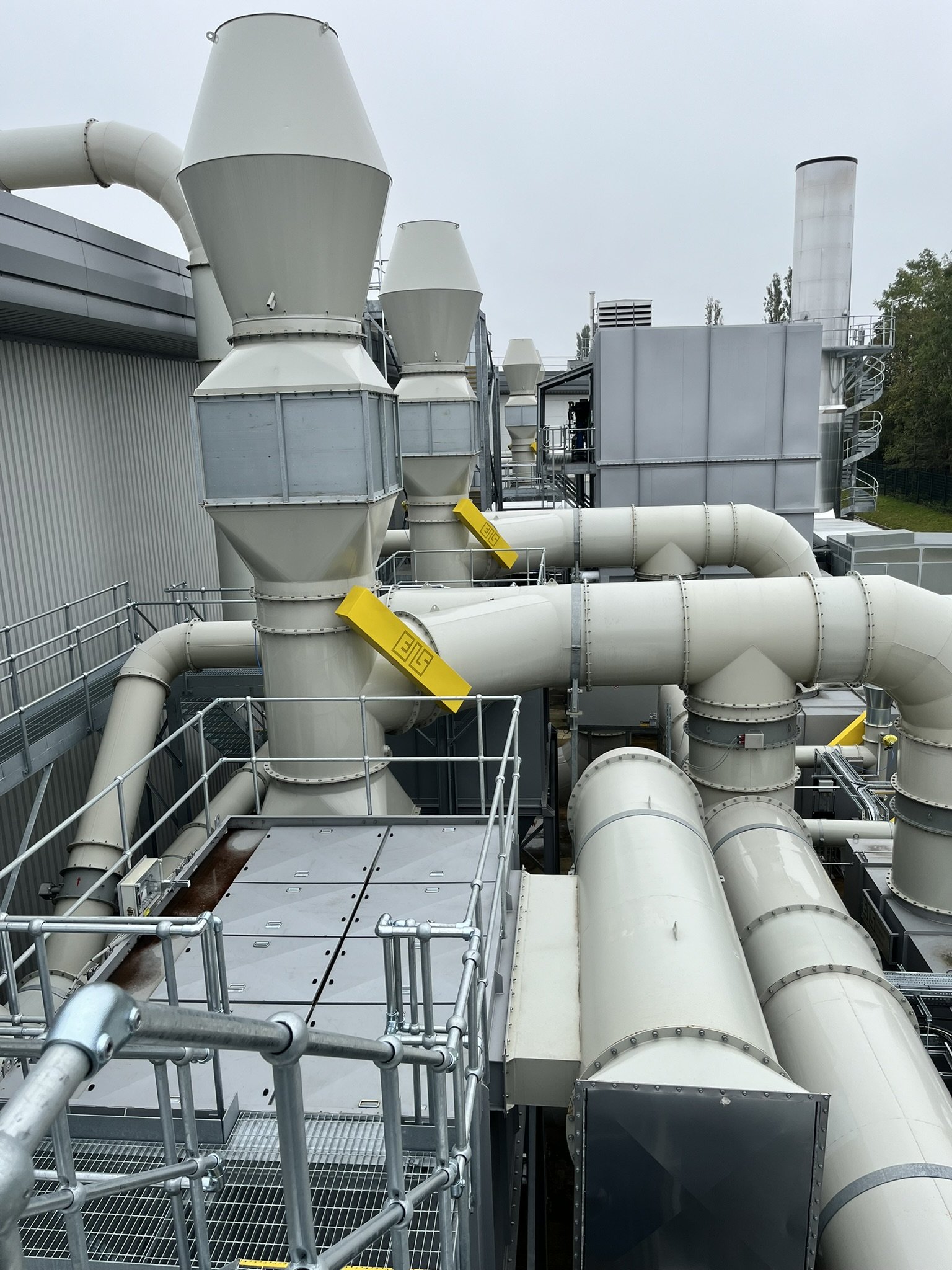Thermal oxidizers use high temperatures to convert contaminants to carbon dioxide and water vapor. Normally the reaction takes place at a temperature ranging from 750°C to 850°C. At these temperatures, with good mixing and sufficient oxygen, the destruction efficiency in the combustion chamber is almost 100%.
DRYSYS partner with CECO EIS, a United Kingdom based company specialising in VOC Abatement and Odour Control Systems, to offer a range of Thermal Oxidizers, and other turnkey solutions for VOC Abatement, Odour Control and Air Pollution Control technologies in Australia.
Oxidizers & Other Technologies
-
A direct fired oxidizer is effectively a combustion chamber with suitably designed burner. The exhaust temperature from a direct fired unit is typically the same as the combustion chamber temperature. This type of oxidizer is, therefore, normally only used where fuel is free or where the inlet concentration of the airstream to be treated is very high. Typically, direct fired oxidizers are supplied with secondary heat recovery (to heat air, hot water or thermal oil or to raise steam etc.).
-
Regenerative Thermal Oxidizers are the showpiece of any thermal oxidizer portfolio and they can be used in very many applications. Their integral dynamic heat exchange system can be used to produce thermal efficiencies of up to 98%. This high level of thermal efficiency minimizes the requirement for additional support fuel and in many applications allows the RTO to operate autothermally, without the addition of any fuel, in a flameless mode.
The principle of the RTO is simple. The contaminated stream is introduced into the oxidizer via a hot ceramic bed where it picks up heat prior to combustion. The hot volatile gases then enter the combustion chamber where they are oxidized (typically at 800°C) in an exothermic reaction which releases additional energy into the system. If there is sufficient heat generated from the internal heat recovery and from the exothermic reaction, then the burner will switch off. In this autothermal, flameless condition, the combustion chamber temperature will be maintained without support fuel.
The gas is held at the designed temperature in the combustion chamber for the required residence time. The cleaned gas then exits through a second bed of ceramic media where it gives up its heat, leaving the oxidizer only slightly hotter than it entered. At the end of this cycle the oxidizer outlet bed is hot and the inlet bed is now cooler. The cycle is therefore reversed periodically, in order to maintain equilibrium and to keep the regained heat within the oxidizer system.
-
Recuperative systems Volatile Organic Compounds (VOCs) can be converted to carbon dioxide and water vapor by thermal oxidation at temperatures typically above 750°C.
A recuperative thermal oxidizer uses an integral primary shell and tube heat exchanger to preheat the incoming contaminated air using the high-temperature air that is exhausted from the oxidizer.
Where the level of VOC is significant, the heat released during the oxidation of the VOC will also be recovered, improving the cost-effectiveness of the system.
A primary heat exchanger can recover up to 70% of the heat input by the burner or released during the oxidation process by preheating the inlet exhaust stream, reducing the support fuel required by the burner to maintain the required oxidation temperature.
They are a simple, cost-effective, means of destroying VOC where the inlet concentration is relatively high or particularly where heat can be usefully recovered for other processes.
Secondary heat exchangers can also be utilized to recover heat as a utility for other energy requirements.
-
CECO EIS offers a full range of air pollution control technologies:
- Heat Recovery
- Rotary Concentrators
- Catalytic Oxidizers
- Filtration
- Adsorption Systems
- Wet Scrubbers
Specialist Treatment Knowledge:
Corrosive
Oxygen deficient
Containing vapour phase silicon
Wet
Containing particulate
Typical Applications:
Chemical, Petrochemistry and Biodiesel
Packaging and Printing
Automotive and Aerospace
Pharmaceutical and Medical waste
Natural gas processing
Rubber and Cement compounds
Solar energy













